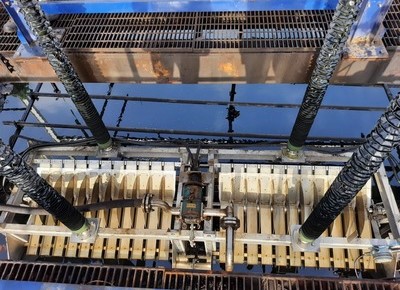Improve Control Of Water & Wastewater Flow

Water and Wastewater treatment plants’ operations are based on the scheme and the type of in-flow. Essential to any treatment scheme are sluice gates. These gates are integral to a treatment plant as they considerably contribute to the process efficiency.
Today, we will discuss how to choose the right sluice gate. It’s automation and advantages.
The selection of the sluice gate should be based on the following points.
1. Water & wastewater treatment plants follow specific standards such as IS 3042.1965/ IS 13349.1992/A WW A C513. It is recommended to use the specifications as guidelines for the selection of a sluice gate.
2. Material selection: The ideal sluice gate material should provide a minimum of 25 years of service life. A test should be conducted to precisely determine the condition of the water/wastewater treatment plant. For example, in case high corrosion conditions are present in sewage a stainless-steel gate should be considered.
3. Based on the duty the gate should be capable of withstanding the seating, unseating and operating heads. It is important that all the components should withstand stress during installation & operation.
4. Leakage: It is vital that the sluice gate meets the leakage requirement. Gates equipped with adjustable wedges facilitate gate adjustment and control of leakages.
5. Gate operation: For ease of operations the operating stem and floor-stand operator should be sized. Right-sizing ensures smooth operation of the gate during all load condition.
6. Shape: Based on the design requirement the shape of the sluice gate should be identified whether square, rectangular, or circular.
7. Actuation: Sluice gates have been operated manually for decades but now we have the option of motorized/hydraulic/pneumatic actuation. Considering the type of actuation is important in the selection of the sluice gate.
Water management systems essentially stabilize channels and manage water levels to control flooding, provide water for irrigation, and control levels upstream or downstream of the system to safeguard the ecosystem.
Whereas, water & wastewater treatment plants deploy sluice gates at various stages of treatment to hold and control the release of a particular process water stream. Failure to hold and/or release the desired amount of water/wastewater at a given time may lead to disruption of the entire treatment cycle or may lead to failure in achieving desired results.
To ensure minimum or no room for error, advancements in conventional techniques have been made such as automated flow regulation systems. Automated system controls sluice gate operations to obtain the desired outcomes within a short time. An appropriate control scheme is developed to automate the gate system for water discharge in the treatment plants and canals.
The automated gate system uses automatic level control gates and ultrasonic water level sensors. For example, a typical automated flow regulation system consists of 4 control gates installed in the canal at the downstream side and 9 sensors to monitor the water level. The sensors are installed at the downstream side, the upstream side, and the head tank for water level monitoring. The control gates are adjusted such that it releases a certain amount of water in particular areas.
The automation of sluice gates ensures the release of water in the right amount and at the right time. Along with the functional benefit it also proves to be advantageous in the following ways:
-
- • Cost-effective
- • Requires less maintenance than manual operation
- • Control the levels of delivery
- • Provide a predictable and stable regulation system
- • Provide precise levels in distribution streams/canals
- • Eliminates frequent manual adjustment to weirs and gates
- • Less labor intensive
- • Prevents overflow
Data can be stored to provide diagnostic information on the gate operation.
With the growing demand, the pressure on water canals, water, and wastewater treatment plants is on increase to perform at optimum levels at all times. Automated sluice gates are a step towards achieving negligible errors and high performance through minimum dependency on manual labor, data collection, and analysis, precise operations, and timely action during a crisis.
Frequently Asked Questions
Q1. How does a mechanical bar screen help in removing debris from water?
A. A Mechanical Bar Screens is an essential component in the process of removing debris from water in various water treatment facilities. It plays a crucial role in ensuring the proper functioning and efficiency of wastewater treatment plants.The main purpose of a mechanical bar screen is to prevent large solid objects such as sticks, rags, plastics, and other debris from entering further into the water treatment system.
Q2.What are sluice gates and what is their purpose?
A. Sluice Gates on Potential Engineering are hydraulic structures that are used to control the flow of water in rivers, canals, and other water bodies. They are typically made of metal or concrete and are designed to open and close, allowing water to pass through or be held back as needed.





